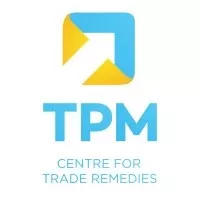India and the EU are currently in the process of negotiating a Broad-based Trade and Investment Agreement. The fourth round of negotiations were recently concluded between the two trade partners. While the EU collectively ranks as India's second largest trade partner, India is the ninth largest trading partner for the EU. Given the increasing trade between the two, the trade agreement proposes to facilitate trade by liberalizing trade in goods and services as well as harmonizing non-tariff barriers, improving connectivity & logistics, and addressing sector-specific challenges.
Trade negotiations between India and EU
The Broad-based Trade and Investment Agreement is a free trade pact that India and the EU have been negotiating since 2007. The Agreement is aimed to improve market access for services, intellectual property rights, and investments while liberalizing bilateral commerce through tariff reductions. However, the negotiations were stalled in 2013, since the parties failed to reach a consensus on certain issues. India and the EU resumed negotiations for the trade agreement that includes geographic indicators (GI). In June 2022, the first round of negotiations came to an end. Intending to complete the trade agreement by the end of 2023, India and the EU recently concluded the fourth round of discussions for the comprehensive free trade agreement in Brussels.
Trade relationship between India and the European Union
India and Europe have a long-standing historical relationship. Trade between the Indian subcontinent and Europe was enabled by the old Silk Route, which resulted in the flow of products, concepts, and cultural influences. The Colonial Era shaped trade patterns and promoted economic interdependence, further solidifying this tie.
The volume of trade between India and the EU has significantly increased recently. In the past 20 years, the bilateral commerce between India and the EU has grown on an average by 10%. In the years 2021–2022, the bilateral trade between the two parties was around USD 116 billion. Despite the worldwide disruptions, bilateral trade impressively increased annually in 2021–2022 compared to 2020–2021 by 43.5%. In 2022-23, bilateral trade between India and the EU was about USD 135 billion.
There is a well-diversified portfolio involved in the exchange between the two counterparts. Petroleum oils and oils derived from bituminous minerals (apart from crude) are the main exports from India, along with articles made of iron and steel, textiles, gems and jewellery, organic chemicals and automobile parts and components. However, India largely imports capital goods, diamonds, metal scrap, medicines, medical or surgical/laboratory instruments, and polymers from the EU.
The EU, as a collective bloc, is the second largest trading partner for India, after the USA, while India ranks as the ninth-largest trading partner for the EU. However, there still exists a significant untapped potential, which has prompted both sides to actively work towards harnessing it through various initiatives including ongoing negotiations for the finalization of trade agreement.
Expectations from the FTA
There are high expectations from the India-EU Free trade agreement given the significant trade involved. India's expanding middle class and rising standards of living offer a considerable market for European exports. India's strengths in information technology, textiles and services complement Europe's strengths in sectors like manufacturing, engineering, chemicals and the automobile industry.
Naturally, India and the EU expect to utilize mutual potential and strengths and at the same time facilitate trade by addressing the challenges being faced. Therefore, the focus area under the agreement is not only limited to liberalize trade in goods and services, but also harmonization of non-tariff barriers, improving connectivity & logistics, and addressing sector-specific challenges. India is also negotiating with the EU for a data-secure status and for the exemption of MSMEs from the imposition of Carbon Tax.
Challenges faced in finalization of the Agreement
Both parties encountered certain obstacles during the negotiation process, which are in the process of resolution by frequent and thorough discussions. Among other things, the following issues have come up for discussions frequently -
- Mobility of Professionals – The EU does not have a uniform working visa system due to which migration of Indian professionals is restricted across EU nations. Therefore, India is seeking a permanent solution to the given issue.
- Access to the EU market – The significant rise in non–tariff barriers (NTBs) such as technical barriers to trade (TBTs), phytosanitary measures, industrial standards, and conformity assessments from the EU is acting as a hindrance to exports. Liberalization of requirements in this regard would help improve exports to the EU.
- Intellectual Property Issue – The EU demands adherence to a stronger and more stringent intellectual property protection law that goes beyond the obligations of the Trade-Related Aspects of Intellectual Property Rights (TRIPS) Agreement. According to the TRIPS Agreement, intellectual property rights may be disregarded to protect public health. However, many developed countries, including the EU see this as a major threat to their IPR rights Therefore, India may seek rationalization of requirements in this regard.
- Dispute settlement mechanism – Another area of friction is the proposal by the EU to set up an investor-state dispute settlement mechanism, which is incompatible with current Indian laws. This will allow the EU investors to challenge the government in front of an international tribunal.
Conclusion
In recent years, there has been a notable improvement in the trading relations between India and the EU. A stronger focus on trade cooperation has been made possible by a shared desire to strengthen economic connections and a realization of the enormous possibilities for cooperation. With 27 countries as part of EU, the India-EU pact will be India's largest trade pact with a Western bloc. India's exports of commodities and services is expected to continue to increase and diversify, thanks to trade under the Agreement. A deeper collaboration between India and the EU is likely to deliver important benefits for firms, consumers, and overall economic growth as both members continue to negotiate the changing global trade landscape. The Agreement has the potential to influence India's economic growth narrative if it is well-structured and implemented.
The content of this article is intended to provide a general guide to the subject matter. Specialist advice should be sought about your specific circumstances.



